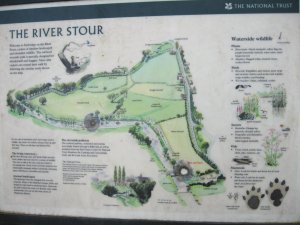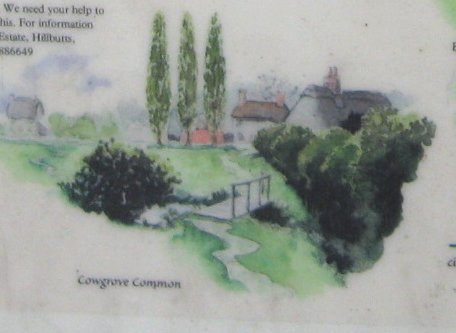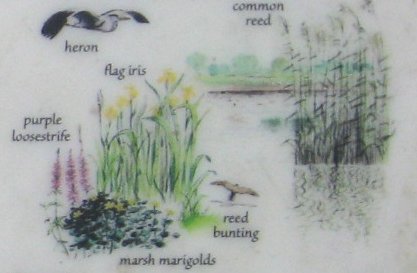THE RIVER STOUR
Welcome to Eyebridge on the River
Stour, a place of timeless landscapes
and abundant wildlife. The surfaced
riverside path is specially designed for
wheelchairs and buggies. More able
visitors can extend their walk by
following the circular route shown
on the map.
For the sake of wheelchair users and to help conserve
wildlife, dog owners are asked to always to clean up after
their dogs. Please use the bags and disposal bins
provided.
The living waterway.
The slow-flowing water and fertile banks provide
food, shelter and nest sites for a variety of wildlife.
The otter is one of the rare creatures which is
increasing here. Some of the riverside meadows are
traditionally maged without chemicals, attracting
many wild flowers, butterflies and animals.
Ancient landscapes.
The landscape here has changed little over the
centuries. Many of the thatched cottages, fields and
hedgerows date back to medieval times. Upstream,
the path crosses the route of a Roman road, whilst
downstream you can see the twin towers of
Winborne Minster.
The riverside pathway.
The surfaced pathway, viewpoints and seating
were kindly funded through a Biffaward, as well as
donations from the East Dorset Centre for National
Trust Members, the Camping and Caravanning
Club, and the Land army Association.
|
The National Trust.
The National Trust is a conservation charity.
We need your help to protect beautiful and
historic places such as this. For information
contact The National Trust, Kingston Lacy Estate,
Hillbutts, Winborne, Dorset BH21 4DS
Tel 01202 886649
Special events and visits for less able
visitors can be arranged through
the Countryside Wardens
on 01202 840630
Waterside wildlife
Plants.
River banks: Marsh marigold, yellow flag iris,
purple loosestrife, bulrush, water mint, water
forget-me-not.
Meadows: Ragged robin, meadow sweet,
cuckoo flower.
Birds.
Riverside: Kingfisher, grey heron, mute swan
and summer visitors such as the reed warbler,
sedge warbler, reed bunting.
Wet meadows: Snipe, redshank, curlew.
Insects.
Butterflies: Orange tip,
peacock, clouded yellow.
Dragonflies and damselflies:
Brown hawker,
white-legged damselfly
Fish.
Trout, roach, perch, dace,
chub, pike, minnow, eel.
Mammals.
Otter: Look for tracks and listen for its loud
chirping cries.
Water vole: Look for its tracks
and listen for the distinctive
'plop' as it dives into
the water.
|





